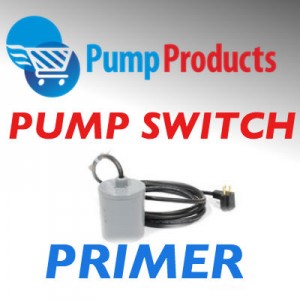 One of the most important things to consider when choosing a sump pump is the type of switch that will operate it. A float switch monitors the liquid level in a sump pit and automatically turns a sump pump on and off. The right float switch could mean the difference between a dry basement and thousands of dollars worth of water damage.
One of the most important things to consider when choosing a sump pump is the type of switch that will operate it. A float switch monitors the liquid level in a sump pit and automatically turns a sump pump on and off. The right float switch could mean the difference between a dry basement and thousands of dollars worth of water damage.
Float switches are available in a variety of designs and there are a number of factors to weigh when selecting the switch type that’s right for you. How much time are you willing to spend monitoring your pump? What is your tolerance for malfunction? How much space do you have? What is your budget?
Float Switches are among the most commonly used switch types. These switches are attached to floats that control the pump’s operation as they move up and down according to water level changes in the sump pit. They are available in “vertical” and “tethered” styles.
A vertical float switch consists of a float attached to a pole that is vertically placed inside the sump pit. As the float moves up and down along the pole, it turns the pump on and off.
A tether float switch has a tether and a float that moves up and down on the water’s surface and turns the pump on and off as the water level rises and falls.
Float switches are easy to maintain and operate but need to be checked periodically as they are prone to obstruction by sump pit debris. In addition, vibration can cause a sump pump to “creep” across the bottom of the pit and trap the float against the pit wall.

This Liberty Float Switch is suitable for sump and sewage pumps. The switch consists of a float and cord with a piggyback plug that makes it possible to plug the switch and pump into the same electrical outlet.
Float switches are available in pump up and pump down styles. A pump down switch will turn on the electricity when the float is in the up position. A pump up switch will turn on the electricity when the float is in the down position.
Diaphragm Pump Switches contain a membrane that is convex when water is at low levels and concave when water rises. This change kicks on the sump pump. When the water level falls, the membrane moves back to its convex shape and shuts off the pump. Diaphragm switches are pressure activated and are therefore immune to “trapping” like float switches. They are, however, subject to obstruction by small pebbles and tend to lose flexibility over time.

This Little Giant Vertical Diaphragm Switch is ideal for applications where space is limited. It can be used in sump and sewage pits and will not malfunction in turbulent applications.
Electronic Pump Switches consist of a control module and a sensor that is set at a level at which the pump is to be activated. When water rises to the sensor, the pump kicks in and pumps down the water. Electronic switches are not subject to obstruction like float switches or aging like diaphragm switches and are among the most reliable switch types available. In addition, electronic switches will often sound an alarm when there is a problem. They are, however, subject to electrical failure and can be costly to repair.

The PHCC Pro Series USC3 Ultimate Controller and Sensor monitors pump and power conditions and sounds an alarm when problems are detected.
The sensor has no moving parts to wear out or break. It’s simply a monitoring sensor rod. When the water level touches the rod, the sensor detects it and activates the pump.
Still not sure which switch is right for you? Our Product Experts are standing by to help you select the pump switch best suited to your needs. Visit us at www.pumpproducts.com or call 1-800-429-0800





